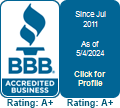Meal planning can be a stressful activity for many people, especially if their changing health means they need to learn a new way to eat! For seniors, their body and appetite are changing from what they are used to, making it harder for them to eat enough of the nutrients they need in order to thrive as they age. What can you or your loved one do to adjust your diet as you age? Check out our 6 Tips for a Senior-Friendly Meal Plan, and talk to a dietitian or healthcare professional if you get stuck!
Make a Colorful Plate
The easiest way to get the nutrients you need is to build a plate with fruits and vegetables of all different colors. The different colors represent vitamins, minerals, and nutrients and give you a more well-rounded boost! Some good ideas for your colorful meal include:
- Red: try strawberries, peppers, and apples
- Orange: try carrots, oranges, and papaya
- Yellow: try bananas, squash, and mangos
- Green: try leafy greens, broccoli, and avocado
- Purple: try berries, cabbage, and beets
These foods are high in fiber, vitamin C, and vitamin D, which are three of the most important dietary factors for healthy aging! (NCOA)
Drink Water
Did you know that many seniors lose their sense of thirst as they age? Dehydration is a major cause of hospitalization for seniors, so make sure you drink water even if you’re not thirsty. Water helps your body to repair damaged cells, gives you more energy, and keeps your brain and digestive system in check. You can also try tea or foods with high water content!
Eat Regular Small Meals
Most seniors aren’t as active as they used to be, so there’s a good chance that they do not need as many calories as before. According to health.gov, the average sedentary senior needs 200-800 fewer calories than adults in other age groups. So what can you do if you’ve lost your appetite or aren’t sure when to eat and how much? Try breaking your larger meals into smaller meals throughout the day. That way, you’ll have enough energy, but won’t upset your stomach or overeat as easily. If you’re not very hungry, try a small healthy snack or a liquid-based dietary supplement to get what you need!
Stick to Whole Foods
It can be tempting to grab for the cookie jar or pint of ice cream, but especially as we age, it’s important for most of our diet to consist of whole foods. Whole foods are foods from nature that have few added ingredients or preservatives. These can include lean meats and proteins, fruits and vegetables, eggs, whole grains, and nuts and legumes. A good rule of thumb for finding whole foods at the grocery stores is to look in the “fresh” sections, usually around the perimeter of the store.
Increase Vitamin and Fiber Intake
Vitamins and fiber are two of the most crucial things to consider in a senior-friendly meal plan! Vitamins protect seniors’ immune systems, while fiber aids in digestion. To keep your body healthy and functioning as well as possible, try foods with the following vitamins and properties:
- Vitamin C can be found in most fruits, bell peppers, and broccoli. Citrus fruits are especially full of Vitamin C! Vitamin C is one of the most important vitamins for warding off illness and infection.
- Vitamin D can be found in milk, some fruit juices, and eggs. If you want to get Vitamin D from fruit juice, make sure it’s 100% juice with a label that says it’s fortified with Vitamin D. Vitamin D is especially helpful for fortifying your bones, teeth, and muscles.
- Beta Carotene can be found in plant-based foods, such as sweet potatoes, carrots, and tomatoes. Beta Carotene is what allows our bodies to make Vitamin A, which helps with immune function and vision as we age.
- Dietary Fiber helps to prevent constipation, diarrhea, and other digestive problems. Fiber also regulates cholesterol levels, which is an added benefit for many seniors with heart disease. Some of the best sources of fiber include nuts, vegetables, and whole grains.
- Probiotics are good bacteria that you can find in yogurt products. Avoid sugary yogurts and buy the ones with the biggest health benefits!
Learn More: Healthy Habits for Seniors and Caregivers Blog
Talk to Your Doctor and Family About Meal Planning
>Especially if you have a chronic health condition, it’s a good idea to talk to your doctor about what meal plan will work best for you. For example, many seniors with diabetes need to be mindful of sugar levels in their diets, whereas many seniors with heart disease have to focus more on lean meats and low cholesterol foods. Talk to your doctor about your health concerns and current eating habits, and see what they recommend! It’s also a good idea to talk to your family and see if they can help you with healthy meal preparation and planning.
Readers Also Read: Heart Health For Seniors Blog
Conclusion
Eating well can feel overwhelming, especially as we age and our body’s needs and responses change. Start thinking about what a senior-friendly meal plan looks like for you, and do not hesitate to ask for help from family members and healthcare professionals! With the right help, research, and determination, you can create a meal plan that tastes good AND takes care of your body!
- Public Health in the Age of COVID - September 15, 2021
- World Elder Abuse Day June 15, 2021 - June 28, 2021
- World Elder Abuse Day - June 15, 2021



